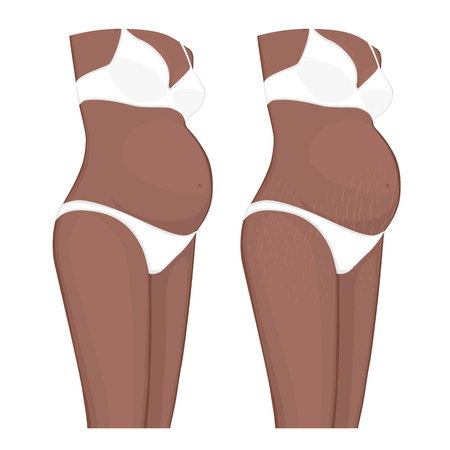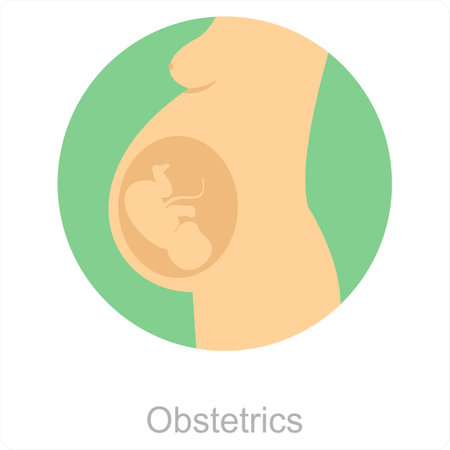1. Understanding Cellulite: Causes and Challenges
Cellulite is a common skin condition that affects people of all body types and fitness levels. It appears as dimpled or lumpy skin, typically on the thighs, buttocks, and abdomen. While its completely harmless, many people seek ways to reduce its appearance for smoother, firmer skin. To effectively address cellulite, its essential to understand its root causes and why a single treatment approach often falls short.
What Causes Cellulite?
Cellulite develops due to a combination of factors, including genetics, lifestyle choices, and structural changes in the skin. Below are some key contributors:
| Factor | Description |
|---|---|
| Genetics | Your genetic makeup influences skin thickness, fat distribution, and collagen structure, all of which impact cellulite formation. |
| Lifestyle Choices | Poor diet, lack of exercise, dehydration, and smoking can weaken connective tissue and contribute to cellulite. |
| Hormonal Changes | Estrogen plays a role in fat storage and collagen production, which is why cellulite is more common in women than men. |
| Aging Process | As we age, skin loses elasticity and collagen breaks down, making cellulite more noticeable over time. |
| Circumstances Beyond Control | The way fat cells interact with connective tissue under the skin varies from person to person, leading to different degrees of cellulite. |
The Challenge of Treating Cellulite with a Single Approach
Treating cellulite is complex because it involves multiple layers of the skin and underlying fat deposits. Many treatments focus on just one aspect—such as breaking down fat cells or tightening the skin—but fail to address the condition holistically. This is why a multi-modality approach that combines different treatments tends to yield the best results.
The Limitations of Single Treatments
- Creams & Topicals: Can temporarily improve skin texture but do not address deeper structural issues.
- Liposuction: Removes fat but does not improve skin elasticity or connective tissue integrity.
- Massage & Lymphatic Drainage: Helps with circulation but requires ongoing maintenance for visible results.
- Laser & Radiofrequency: Tightens skin but may not significantly reduce deeper fat deposits.
The Need for a Multi-Modality Approach
A successful cellulite reduction strategy should target multiple aspects—skin firmness, fat breakdown, circulation improvement, and collagen production. By combining different modalities, patients can achieve smoother skin with longer-lasting results.
2. Why a Multi-Modality Approach Works Best
Cellulite is a complex issue caused by a combination of fat deposits, weakened connective tissue, and skin laxity. Because of this, using just one treatment often isn’t enough to achieve smooth, dimple-free skin. A multi-modality approach combines different cellulite reduction treatments to target all these factors for the best possible results.
Targeting Cellulite from Multiple Angles
Each cellulite treatment works in a unique way, addressing different aspects of the problem. By combining multiple treatments, you can maximize the benefits and see more noticeable improvements.
| Treatment Type | Main Benefit | How It Helps with Cellulite |
|---|---|---|
| Radiofrequency (RF) | Tightens skin | Stimulates collagen production to improve skin texture and firmness |
| Laser Therapy | Breaks down fat cells | Reduces fat deposits that contribute to cellulite formation |
| Cryolipolysis (CoolSculpting) | Diminishes fat pockets | Freezes and eliminates stubborn fat beneath the skin’s surface |
| Massage & Lymphatic Drainage | Improves circulation | Reduces fluid retention and enhances skin elasticity |
| Morpheus8 (Microneedling with RF) | Tightens and smooths skin | Powers up collagen production while reducing dimpling and sagging |
The Synergy of Combining Treatments
A multi-modality approach ensures that each component of cellulite—fat, connective tissue, and skin texture—is addressed effectively. For example, while radiofrequency tightens the skin, laser therapy or CoolSculpting can simultaneously reduce underlying fat. Adding lymphatic drainage massage helps flush out toxins and improve circulation, further enhancing results.
The Key Benefits of a Multi-Treatment Plan:
- Smoother Skin: Combining treatments improves overall skin texture and reduces dimpling.
- Tighter Appearance: Treatments like RF and microneedling help firm loose skin for a more youthful look.
- Sustained Results: Addressing multiple factors ensures longer-lasting improvements compared to single-treatment approaches.
- No Downtime Options: Many non-invasive treatments can be done together without requiring significant recovery time.
- A Customized Solution: Each individual has different needs, so combining therapies allows for personalized treatment plans that deliver optimal results.
The Bottom Line: Why One Treatment Isn’t Enough
If you’ve tried a single cellulite treatment before and didn’t get the results you wanted, it’s likely because cellulite requires a more comprehensive approach. Using multiple treatments together enhances effectiveness by targeting every layer of the problem—from deep fat pockets to surface-level skin texture. This strategy ensures you get smoother, firmer-looking skin with long-lasting results.

3. Popular Cellulite Treatment Options
Cellulite is a common concern for many people, and while theres no one-size-fits-all solution, combining multiple treatment modalities can yield the best results. Here are some of the most effective cellulite reduction treatments available today.
Radiofrequency (RF) Therapy
Radiofrequency therapy is a non-invasive treatment that uses heat to stimulate collagen production and tighten the skin. This process helps reduce the appearance of cellulite by improving skin elasticity and firmness.
Benefits of Radiofrequency Therapy:
- Non-invasive with minimal downtime
- Stimulates collagen production
- Tightens and firms the skin
- Improves circulation in treated areas
Laser Therapy
Laser treatments target cellulite by breaking down fat deposits and stimulating collagen growth. Some laser devices also incorporate suction or massage components to enhance results.
Popular Laser Treatment Types:
| Treatment Type | How It Works |
|---|---|
| Cellulaze | A minimally invasive laser treatment that targets fibrous bands under the skin to smooth out dimpling. |
| SmoothShapes | A combination of laser and massage therapy that helps break down fat cells and improve circulation. |
Acoustic Wave Therapy (AWT)
This treatment uses sound waves to break up fat deposits and stimulate blood flow, promoting smoother skin texture over time.
Key Benefits:
- Painless and non-invasive
- No downtime required
- Improves lymphatic drainage and circulation
- Tightens connective tissue for smoother skin
Injectable Treatments
Certain injectable treatments, like collagen-boosting fillers or enzyme-based injections, can help break down fibrous bands causing cellulite dimples.
Common Injectables for Cellulite:
| Treatment Name | Main Benefit |
|---|---|
| Sculptra | A collagen stimulator that improves skin thickness and firmness over time. |
| CQ-001 (Qwo) | An FDA-approved injectable that breaks down fibrous bands responsible for cellulite dimpling. |
Non-Invasive Body Contouring Techniques
Treatments like cryolipolysis (CoolSculpting) or ultrasound-based therapies target fat cells without surgery, helping smooth out areas prone to cellulite.
Main Advantages:
- No needles or incisions required
- Permanently eliminates fat cells in treated areas
- Tightens skin for a more toned appearance
- No recovery time needed
The key to effective cellulite reduction often lies in combining these modalities for a more comprehensive approach. By utilizing multiple techniques tailored to individual needs, patients can achieve smoother, firmer skin with long-lasting results.
4. How to Customize a Treatment Plan
When it comes to cellulite reduction, there is no one-size-fits-all solution. A personalized approach ensures that each patient receives the most effective combination of treatments tailored to their unique needs. Factors such as skin type, cellulite severity, and individual goals all play a crucial role in determining the best multi-modality strategy.
Why Personalization Matters
Cellulite appears differently on every person. Some may have mild dimpling, while others experience more pronounced unevenness. Additionally, skin type affects how well certain treatments work. A customized treatment plan considers these variations to maximize results and minimize potential side effects.
Key Factors in Creating a Customized Plan
1. Skin Type
The type of skin a person has can impact how they respond to different cellulite treatments. Sensitive skin may react differently compared to thicker or more resilient skin types.
| Skin Type | Best Treatment Options |
|---|---|
| Sensitive Skin | Gentle RF therapy, manual lymphatic drainage, low-intensity laser treatments |
| Thicker Skin | Stronger RF therapy, deep tissue massage, ultrasound-based treatments |
| Aging Skin | Treatments with collagen stimulation like microneedling or RF needling |
2. Severity of Cellulite
The extent of cellulite also dictates which combination of treatments will be most beneficial. Mild cases may only require non-invasive techniques, whereas severe cellulite may benefit from more intensive therapies.
| Severity Level | Treatment Approach |
|---|---|
| Mild (Stage 1) | Lifestyle adjustments, topical creams, light massage therapy |
| Moderate (Stage 2) | Cavitation ultrasound, radiofrequency therapy, vacuum-assisted treatments |
| Severe (Stage 3) | A combination of energy-based devices, subcision procedures, and collagen-boosting therapies |
3. Patient Goals and Expectations
A successful treatment plan aligns with the patients expectations. Some individuals prioritize quick results, while others prefer gradual improvements with minimal downtime.
| Main Goal | Treatment Recommendation |
|---|---|
| Fast Results | Aggressive combination therapy including RF, laser, and deep tissue massage |
| No Downtime | Mild treatments like lymphatic drainage and low-level laser therapy |
| Sustainable Long-Term Improvement | A mix of in-office procedures with at-home skincare maintenance plans |
The Best Approach: Combining Treatments for Maximum Effectiveness
The key to effective cellulite reduction is combining multiple modalities based on individual needs. By considering skin type, severity level, and personal goals, practitioners can create a highly customized plan that delivers optimal results. Whether using radiofrequency for tightening, ultrasound for fat breakdown, or manual techniques for improved circulation, a tailored approach provides the best outcomes for smoother skin.
5. Maintaining and Enhancing Results
After undergoing cellulite reduction treatments, maintaining and enhancing the results requires a combination of proper post-treatment care, lifestyle adjustments, and a supportive skincare routine. Here’s how you can prolong the benefits of your multi-modality approach.
Post-Treatment Care
Your skin and body need time to recover after cellulite treatments. Following these post-care steps can help ensure optimal results:
| Post-Treatment Care | Why It’s Important |
|---|---|
| Stay Hydrated | Helps flush out toxins and supports skin elasticity. |
| Avoid Excessive Heat | Reduces inflammation and prevents irritation. |
| Gentle Massage | Encourages circulation and lymphatic drainage. |
| Avoid Heavy Workouts | Prevents unnecessary strain on treated areas. |
Lifestyle Adjustments for Long-Term Results
The way you live day-to-day plays a crucial role in maintaining smoother, firmer skin. Consider making these adjustments:
- Nutrient-Rich Diet: Eat foods high in antioxidants, collagen-boosting nutrients, and healthy fats to support skin health.
- Regular Exercise: Incorporate strength training and cardio to improve muscle tone and circulation.
- Avoid Smoking & Excess Alcohol: These habits break down collagen and reduce skin elasticity.
- Manage Stress: High stress levels can contribute to hormonal imbalances that worsen cellulite.
The Right Skincare Routine
A consistent skincare regimen can complement professional treatments and enhance results over time. Try incorporating these key steps:
Daily Skincare Essentials
- Caffeine-Based Creams: Help tighten the skin and reduce fluid retention.
- Retinol Products: Stimulate collagen production for firmer skin.
- Dry Brushing: Exfoliates dead skin cells while promoting circulation.
- Sunscreen: Protects against UV damage that breaks down collagen.
The Importance of Consistency
No single treatment provides permanent results without ongoing maintenance. Sticking to a balanced routine of healthy habits, proper skincare, and occasional touch-up treatments will help keep cellulite at bay for the long term.


